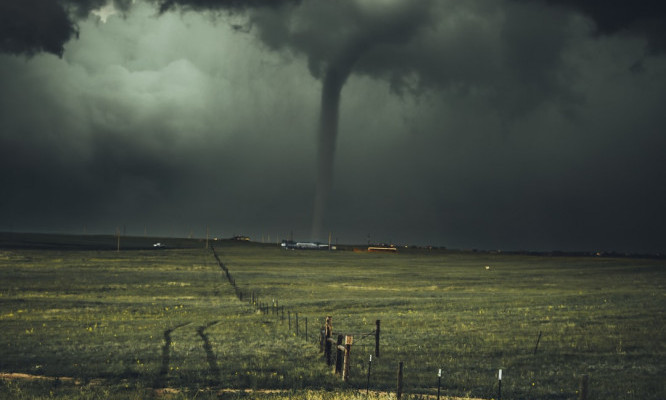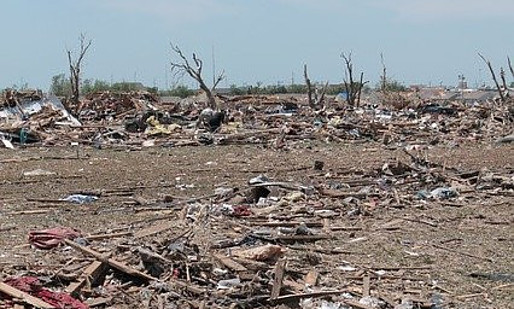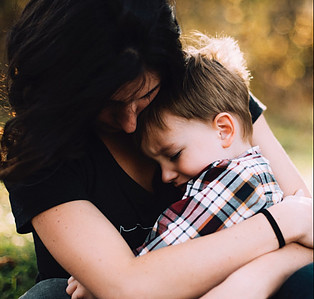Tornados Happen Everywhere.

Of course, it is most common in the plains states of the US but a tornado has been recorded in every one of the United States. At the time of writing this article, there have been 12 tornados reported within 600 miles from where I sit. They are typically a result of climate change and the mixing of hot and cold temperatures. It’s that time of year!
There are a few things I am going to share about tornados in this article that can help you PrepB4 Tornados leaving you ready before you have to be! I am here to help! There are some links on this site for that. As an Amazon Associate, I can make a small commission from qualifying purchases at no extra cost to you.
What To Know About Tornados
A tornado is a violently rotating column of air extending from the base of a thunderstorm down to the ground. Tornado intensities are classified on the Fujita Scale with ratings between F0 (weakest) to F5 (strongest). They are capable of completely destroying well made structures, uprooting trees, and hurling objects through the air like deadly missiles.
Know what these mean and the difference between them. It could save your life!
Tornado Watch
Tornadoes are possible in and near the watch area. Review and discuss your emergency plans, and check supplies and your safe room. Be ready to act quickly if a warning is issued or you suspect a tornado is approaching. Acting early helps to save lives!
Tornado Warning
A tornado has been sighted or indicated by weather radar. Tornado warnings indicate imminent danger to life and property. Go immediately underground to a basement, storm cellar, or an interior room (closet, hallway, or bathroom).
Be Ready Before You Have To Be!
If you would like to start prepping but are not sure where to begin,
Click here to start Your Survival Plan!
Here are some tips to help you know what to do if a tornado presents itself in your area.
- During any storm, listen to local news or an NOAA Weather Radio to stay informed about watches and warnings.
- Know your community’s warning system. Communities have different ways of warning residents about tornados, with many having sirens intended for outdoor warning purposes.
- Pick a safe room in your home where household members and pets may gather during a tornado. This should be a basement, storm cellar, or an interior room on the lowest floor with no windows.
- Practice periodic tornado drills so that everyone knows what to do if a tornado is approaching.
- Consider having your safe room reinforced. Plans for reinforcing an interior room to provide better protection can be found on the FEMA Web site at FEMA.gov/emergency-managers
- The safest place to be is an underground shelter, basement, or safe room.
- If no underground shelter or safe room is available, a small, windowless interior room or hallway on the lowest level of a sturdy building is the safest alternative
If You Are Caught In A Tornado And Survive
Here are some things to think about also.
Continue listening to local news or NOAA Weather Radio for updated information and instructions.
- If you are away from home, return only when authorities say it is safe to do so.
- Wear long pants, a long-sleeved shirt, and sturdy shoes when examining your walls, doors, staircases, and windows for damage.
- Watch out for fallen power lines or broken gas lines and report them to the utility company immediately.
- Stay out of damaged buildings.
- Use battery-powered flashlights when examining buildings—do NOT use candles.
- If you smell gas or hear a blowing or hissing noise, open a window and get everyone out of the building quickly and call the gas company or fire department.
- Take pictures of damage, both of the building and its contents, for insurance claims.
- Use the telephone only for emergency calls.
- Keep all of your animals under your direct control.
Let Your Family Know You’re Safe
If your community experiences a tornado or any disaster and you want to make sure your family knows you are safe you can register on the American Red Cross Safe and Well Web site available through RedCross.org to let your family and friends know about your welfare. If you don’t have Internet access, call 1-866-GET-INFO to register yourself and your family.
If you want a more in-depth checklist, fill out the form below on this page and I will send you a printable copy of what you need to know and do before a tornado!
I am hoping to raise awareness, keep people safe, and help them be ready before they have to be!
If you want to know the same about Hurricanes, check out PrepB4 Hurricane.
